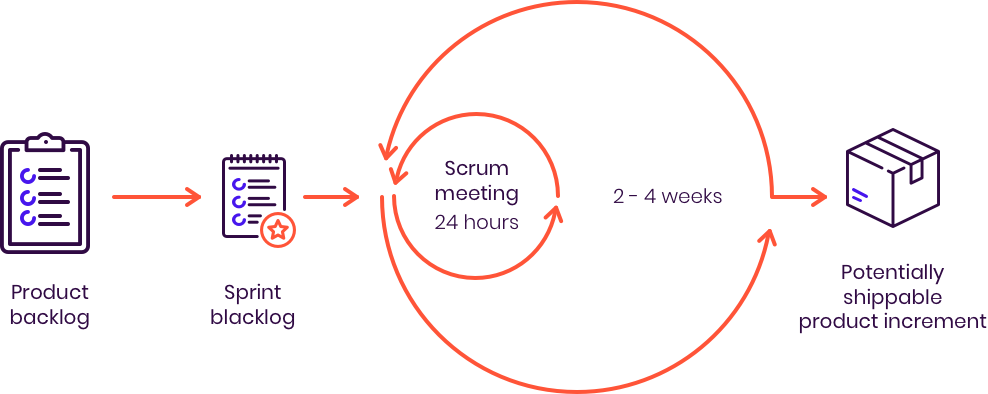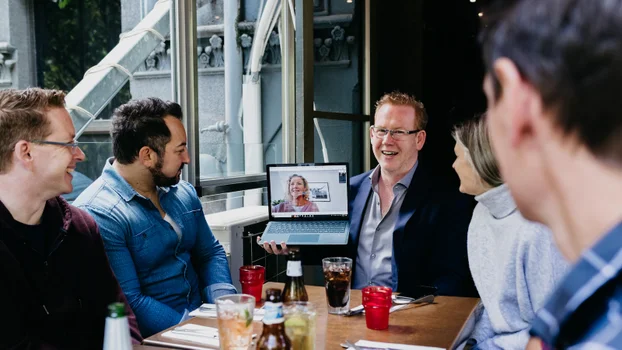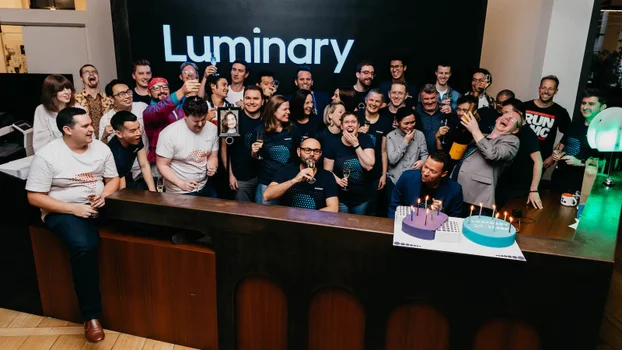Our Agile-focused delivery methods allow us to create a true partnership with our clients.
We begin by requesting that a client representative (Product Owner) is nominated to join the delivery team and work in tandem with us on a day-to-day basis. This allows you, as the client, to experience the delivery process first hand, and presents a level of comfort that we’re focusing on the right things. It also facilitates quick turnaround times for decision making – effectively putting you in control at the level of detail you’re comfortable with.
Agile methodology is optimised to deliver the most important features, set by the Product Owner (ideally based on your customer needs) as quickly as possible, and then iterate. The process includes feedback mechanisms to continually optimise the way we work as a team and ensure we are being as efficient as possible.
Luminary is a member of the International Consortium for Agile (ICAgile). ICAgile is an internationally recognised leader in the Agile community for setting standards and providing Agile certification. It is a community-driven organisation that consists of pioneers, experts, and trusted advisors. See the full list of ICAgile members.
How we deliver Agile
The following is a broad outline of some of the terms you’ll hear associated with Scrum, one of the most common implementations of Agile development. Scrum is just one implementation of the Agile philosophy and is our preferred process for large projects and projects where we are delivering continual improvements to the customer.
User stories
Description of a task or feature which is focused on the end-user (customer, member, donor). For example, “As a customer, I need to register for an account, so I can get access to restricted content”. User stories should be written in such a way as to be easily understandable by anybody with knowledge of the product.
Acceptance criteria
A set of tests that need to be true for a user story to be complete. These focus the team on a shared understanding of the work at hand. For example, “Given I am a customer registering an account, when I enter my email address it will need to pass a ‘valid password’ check.”
Product backlog
User stories are placed into a Product backlog, which is essentially an evolving to-do list for the project. One of the benefits of the backlog is that as new requirements arise, they can be slotted into the backlog for future consideration, allowing the team to retain focus on the highest priorities.
Sprint backlog
A sprint is a focused effort of work toward an agreed and shared set of goals. The timeframe is usually between two and four weeks. As with the Product backlog, the Sprint backlog represents a set of user stories the team has selected to be executed in a sprint.
Scrum meeting
One of the keys to the success of this delivery model is a daily meeting, including the Product Owner. This should be less than fifteen minutes at the same time every day and helps align the team and present an opportunity to remove blockers.
Planning
This is specifically included as there is planning in Scrum. Another key to success for this process is making sure enough planning is done during a sprint to be adequately set up for the next sprint.
Definition of done
Depending on the situation, the ‘definition of done’ can vary. Ideally this would be something like ‘User story delivered to production’, however this may not always be possible for large rebuilds.
Retrospective
A meeting every fortnight which allows the team to reflect on the process and provide feedback on what’s working well, what isn’t working so well and anything that warrants further investigation.

Our Agile expertise
Key people and musings from our blog

3 min read
Luminary officially accredited to provide Agile certifications
Luminary has been accredited by the International Consortium for Agile (ICAgile) to certify clients and staff in Agile Fundamentals (ICP).

Marty Drill
CEO & Founder
Marty is the CEO and founder of Luminary.

Jase Watson
Delivery Director
As Delivery Director, Jase is accountable for successful project delivery, with a keen eye on team satisfaction and client delight.
5 min read
Agile is not a process
We often hear terms like 'agile methodology', 'agile process', 'hybrid agile', and – God forbid – 'wagile' or 'agfall'. But I’m here to set the record straight: Agile is not a process; it’s a mindset.

7 min read
Social contracts: Working out how to work together
Popularised by agile methodology, a social contract provides a way for a team to decide what is acceptable behaviour to ensure everyone gets what they need.

8 min read
Agile ways of working: Continuous improvement through retrospectives
Popularised by agile methodology, sprint retrospectives provide a way for a team to ensure that they have a regular opportunity to acknowledge what the team did well and where it can improve.

3 min read
Our social contract
To create a social contract, all we had to do was distill the essence of 60+ individual views across 15+ cultural backgrounds, four time zones and two continents… simple, right?!
4 min read
Creating effective teams
Luminary CEO Marty Drill shares some techniques for building a high performing team.
Handy resources
Check out the handy resources below for downloadable guides, checklists and templates to help you achieve your digital goals.

8 min read
How to choose the right CMS
You’ve decided you need a new Content Management System – but where do you start in deciding which one to go with? Here, we distill our learnings over the past two decades of advising clients on choosing digital platforms. We’ve even included a downloadable comparison matrix for you to rank contending CMS or DXP options.

9 min read
Building a martech stack
Selecting a martech stack can be overwhelming. The right mix of products can be the make or break of an organisation’s digital strategy. Here, we share our insights and tips from many years of assisting clients with this daunting task. We also include our downloadable Martech Audit Matrix for you to audit your existing stack.

10 min read
WTF is GEO? A guide to staying visible in AI search
Feeling overwhelmed by all the new acronyms flying around in search and content marketing? You’re not alone. From GEO to AIO and AEO to SXO, it’s hard to know what’s what – and what you actually need to focus on.

6 min read
How to create a digital strategy roadmap
A good strategic roadmap not only outlines what you want to achieve with your digital strategy, but sets out the detail of how you're going to get there. Here we provide guidance on how to do it, along with a downloadable Digital Roadmap Toolkit.

5 min read
How to perform a website audit
Conducting a website audit sounds like a really big, scary, time-consuming chore, but it doesn’t have to be. We’ve simplified the task for you with six key areas to assess – along with a downloadable checklist full of useful questions, tips and tools.

6 min read
How to brief a digital agency
Whether you’re briefing your existing agency or inviting new agencies to respond to a request for proposal, there are certain ‘rules of the game’ that will help you drive the best possible result. This blog post features a downloadable digital agency briefing template to help you get off on the right foot.

The Marketer's Guide to Headless CMS
Everything you need to know if you're considering migrating your website from a traditional CMS to a headless CMS.

A Guide to Digital Product Design
Everything you need to know if you're considering developing and launching a digital product.

5 min read
Why conducting a content audit is essential
Performing a content audit is a crucial step in optimising a website's performance. It can help identify outdated or irrelevant content, identify content gaps, improve SEO efforts, enhance user experience, and save time and resources.










